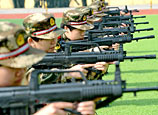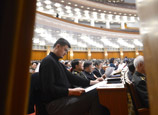
BEIJING, March 7 (Xinhua) -- Plans to further develop a southwestern city that has been a trial area for poverty relief for more than two decades were unveiled Thursday by China's top economic planner.
The National Development and Reform Commission (NDRC) released the plan to support Bijie, a city in Guizhou Province, from now to 2020 in an effort to "explore an unconventional path" for the development of the country's other impoverished areas.
Bijie was approved by the State Council, China's cabinet, in 1988 as a trial zone for ecological environment protection and construction, development and poverty alleviation.
"During the past 24 years, the city has seen remarkable progress in economic and social development," the plan said.
Total production of the city reached 73.7 billion yuan (11.74 billion U.S. dollars) by the end of 2011, up 41 times from 1988. The number of rural residents in poverty dropped from 3.13 million in 1988 to 655,000 by the end of 2011.
However, the area still faces many problems, including out-dated infrastructure, a fragile ecology and imbalanced development between urban and rural areas, the plan said.
The country aims to further promote the livelihood of Bijie people, improve the infrastructure and ecological environment, according to the NDRC.
By the end of 2020, the city's urbanization ratio should be more than 45 percent, and forest coverage rate should top 50 percent. Bijie people should be able to enjoy public services of the country's average level, the plan showed.
The city covers a total area of 26,853 square kilometers and residents stood at 65.2 million at the end of 2011, official data showed.
















 Shanghai Disney Resort unveils resort concept
Shanghai Disney Resort unveils resort concept


![]()
